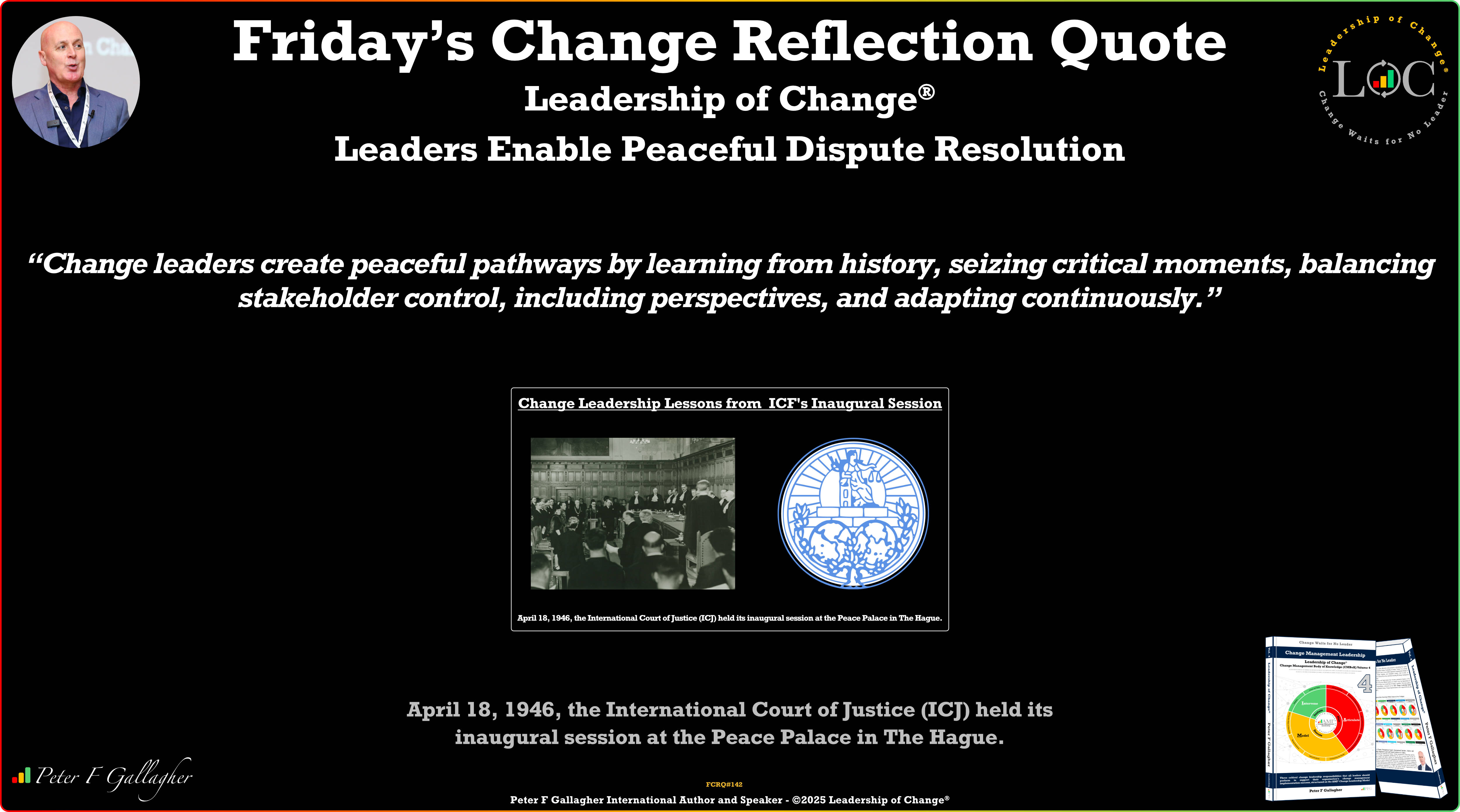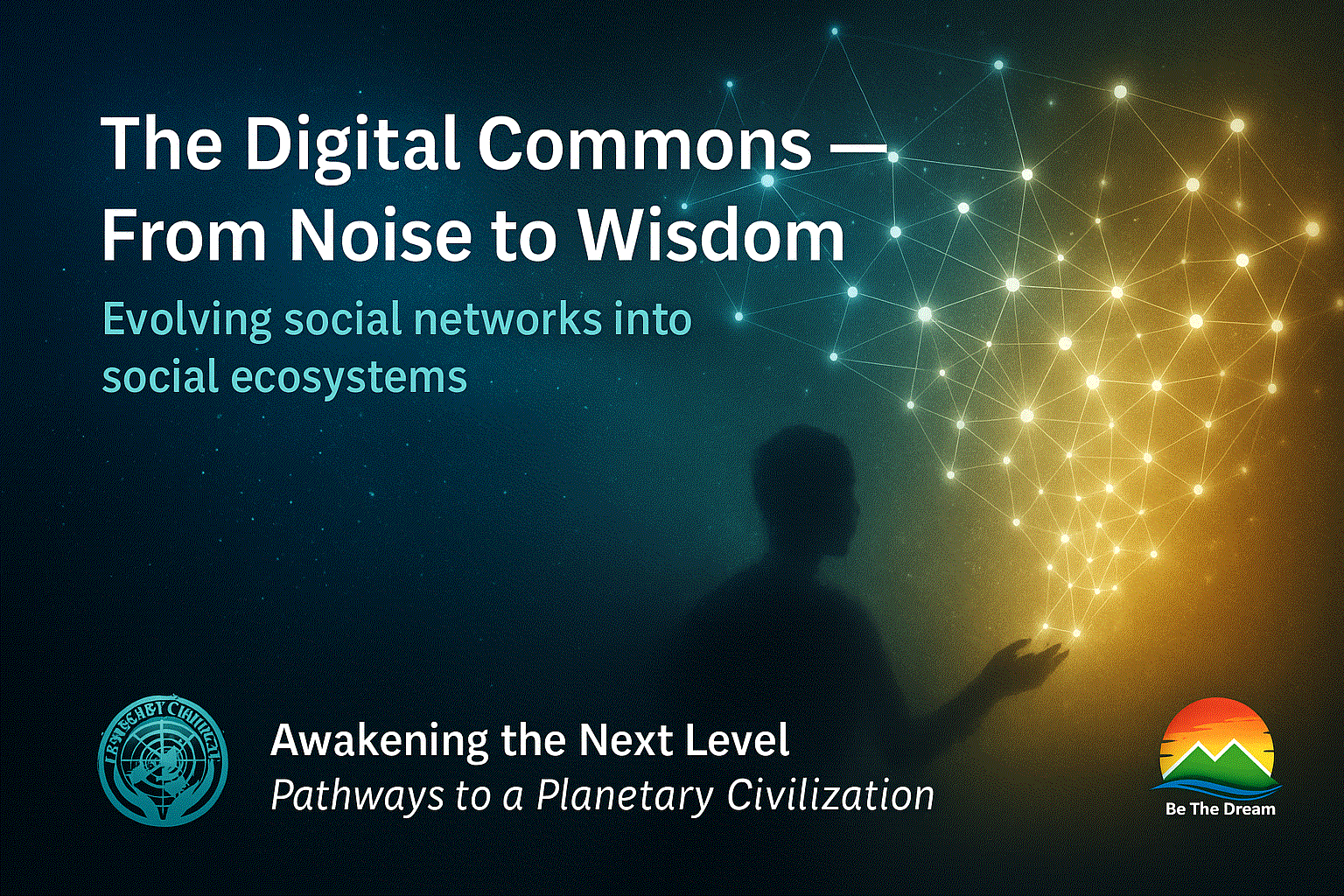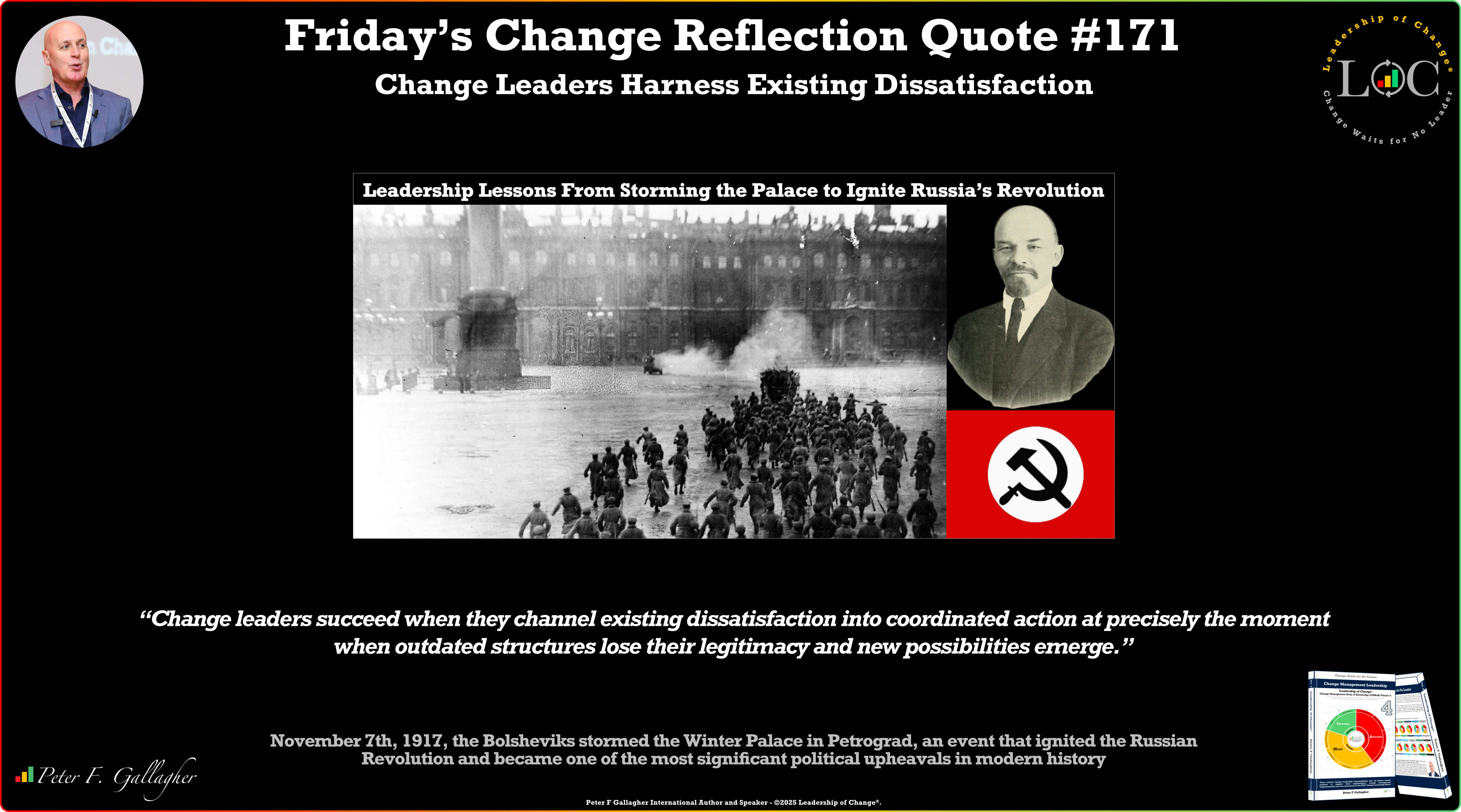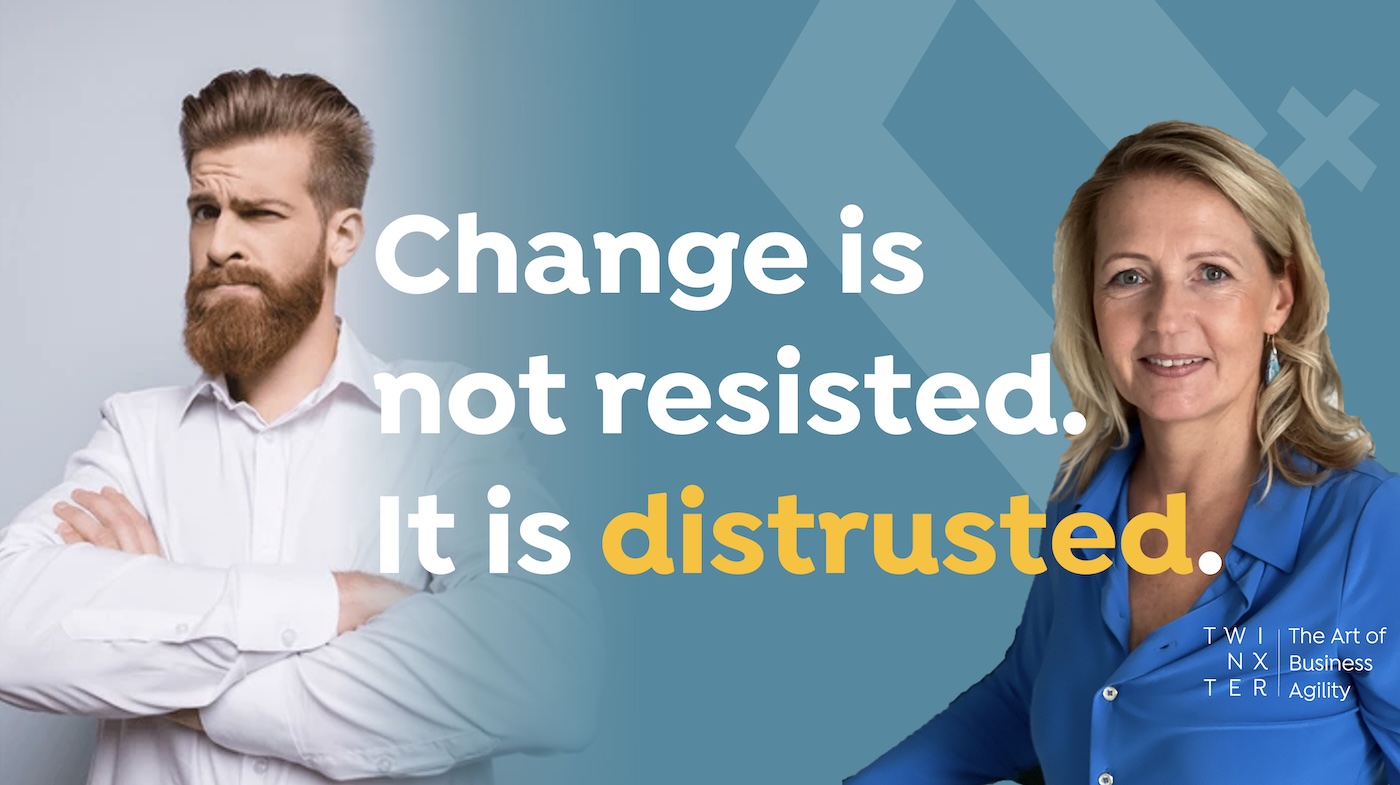Apr18

Leadership Learning!
On this day, 18 April 1946, the International Court of Justice (ICJ) held its inaugural session at the Peace Palace in The Hague, marking a pivotal moment in the post-World War II international order. As the principal judicial organ of the newly formed United Nations, the ICJ succeeded the Permanent Court of International Justice (PCIJ), inheriting its seat, mandate, and commitment to peaceful dispute resolution. The ICJ's establishment reflected a global vision for a stronger, more universally accepted legal mechanism to address conflicts between states through peaceful adjudication rather than military confrontation. Enshrined in the UN Charter, the court’s statute defined its dual role: adjudicating legal disputes submitted by states and offering advisory opinions to authorised UN organs and agencies. This framework underscored the international community’s commitment to resolving disputes through law rather than force. The court's first judges were elected on 6 February 1946 by the UN General Assembly and Security Council, ensuring geographical and legal diversity. Its structure and procedures were crafted to uphold impartiality and fairness, cornerstones for legitimacy in international adjudication. Since its inaugural session, the ICJ has adjudicated a wide range of cases, including territorial disputes, diplomatic conflicts, and treaty interpretations, establishing precedents for peaceful resolution. Its rulings have not only resolved specific disputes but also shaped the development of international law, contributing to a more stable and predictable global legal system. Beyond binding judgments, the ICJ’s advisory opinions have significantly influenced the work of various UN bodies and the broader interpretation of international legal norms. This enduring contribution affirms the power of a clearly articulated vision—rooted in justice, fairness, and legal order, to guide international cooperation over generations. The ICJ’s continuing role affirms the enduring value of legal institutions in maintaining international peace and security. Its existence reflects a collective commitment to justice, order, and the peaceful resolution of conflict in a world that continues to grapple with complex international challenges.
Change Leadership Lessons: The establishment of the International Court of Justice transcends historical significance to offer timeless change leadership lessons, demonstrating the importance of articulating a compelling vision that unites stakeholders, aligns action, and builds legitimacy for transformational change. Leaders of change learn from past failures and incorporate those insights into new structures to create more resilient organisations that can better withstand future challenges. They recognise that launching transformative initiatives during periods of significant disruption can leverage collective willingness to embrace new approaches and institutional frameworks. Change leaders carefully calibrate the balance between centralised direction and stakeholder independence to ensure both guidance and genuine buy-in for successful organisational change. They include varied perspectives in leadership positions to enhance institutional legitimacy and ensure broader acceptance of change initiatives across different constituencies. Leaders of change establish mechanisms that allow for continuous refinement over time, enabling organisations to maintain relevance despite changing external circumstances. Leaders Enable Peaceful Dispute Resolution.
“Change leaders create peaceful pathways by learning from history, seizing critical moments, balancing stakeholder control, including perspectives, and adapting continuously.”
Application - Change Leadership Responsibility 1 - Articulate a Change Vision: The establishment of the International Court of Justice offers a compelling example of how articulating a clear and strategic change vision serves as the foundation for successful transformation. In organisational settings, visionary leaders identify emerging risks and opportunities before they become critical, proactively positioning their organisation at crucial inflection points for future relevance. Effective change leadership begins by defining a compelling future state “B" and contrasting it with the current state “a. This vision must inspire and align stakeholders by clearly showing how the change will lead to shared benefit, increased resilience, and long-term sustainability. In the ICJ example, a shift from fragmented, power-based diplomacy to cooperative, rules-based governance reflected a bold reimagining of international relations—just as organisations today must often shift from legacy systems to new models of operating. Change leaders must demonstrate intellectual rigour, strategic foresight, and integrity—challenging entrenched norms while navigating complex stakeholder concerns. A well-articulated vision should speak to both the pragmatic (efficiency, performance, value) and the aspirational (purpose, fairness, future potential). Additionally, effective change leaders acknowledge and systematically address potential resistance by embedding inclusivity and stakeholder benefits directly into the vision articulation itself. Representing diverse voices, aligning to shared values, and clarifying long-term benefits are all critical for building trust and ownership. Ultimately, articulating a change vision is not a one-time event—it’s an ongoing leadership responsibility. It requires clarity, moral courage, and adaptability to evolve with circumstances. When done effectively, it becomes the guiding light that aligns action, mobilises commitment, and ensures the transformation stays anchored to a shared purpose.
Final Thoughts: Just as the ICJ created structured pathways for peaceful resolution, organisational change leaders must establish frameworks that transform conflict into collaboration. By articulating clear visions that balance diverse interests, today's leaders enable sustainable transformation built on shared understanding rather than imposed directives.
Further Reading: Change Management Leadership - Leadership of Change® Volume 4.
Peter F. Gallagher consults, speaks, and writes on Leadership of Change®. He works exclusively with boards, CEOs, and senior leadership teams to prepare and align them to effectively and proactively lead their organisations through change and transformation.
For insights on navigating organisational change, feel free to reach out at Peter.gallagher@a2B.consulting.
For further reading please visit our websites: https://www.a2b.consulting https://www.peterfgallagher.com Amazon.com: Peter F Gallagher: Books, Biography, Blog, Audiobooks, Kindle
Leadership of Change® Body of Knowledge Volumes: Change Management Body of Knowledge (CMBoK) Books: Volumes 1, 2, 3, 4, 5, 6, 7, 8, 9, 10, A, B, C, D & E available on both Amazon and Google Play:
~ Leadership of Change® Volume 1 - Change Management Fables
~ Leadership of Change® Volume 2 - Change Management Pocket Guide
~ Leadership of Change® Volume 3 - Change Management Handbook
~ Leadership of Change® Volume 4 - Change Management Leadership
~ Leadership of Change® Volume 5 - Change Management Adoption
~ Leadership of Change® Volume 6 - Change Management Behaviour
~ Leadership of Change® Volume 7 - Change Management Sponsorship
~ Leadership of Change® Volume 8 - Change Management Charade
~ Leadership of Change® Volume 9 - Change Management Insanity
~ Leadership of Change® Volume 10 - Change Management Dilenttante
~ Leadership of Change® Volume A - Change Management Gamification - Leadership
~ Leadership of Change® Volume B - Change Management Gamification - Adoption
Keywords: Business Strategy, Change Management, Leadership
 The Digital Commons — From Noise to Wisdom
The Digital Commons — From Noise to Wisdom Friday’s Change Reflection Quote - Leadership of Change - Change Leaders Harness Existing Dissatisfaction
Friday’s Change Reflection Quote - Leadership of Change - Change Leaders Harness Existing Dissatisfaction The Corix Partners Friday Reading List - November 7, 2025
The Corix Partners Friday Reading List - November 7, 2025 The Trust Deficit in Change Programmes
The Trust Deficit in Change Programmes Management of Portfolio complexity a key to Supply Chain responsiveness
Management of Portfolio complexity a key to Supply Chain responsiveness